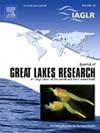Going underground: Changing climate and flow seasonality may increase subsurface flow contribution and modify dissolved nutrient export from agricultural catchments
IF 2.4
3区 环境科学与生态学
Q3 ENVIRONMENTAL SCIENCES
引用次数: 0
Abstract
Climate change is changing air temperature as well as the timing and magnitude of precipitation events, with increasing extreme events and winter flows; and changes are expected to increase in the next century. Such changes would likely alter streamflow and nutrient export, there is still uncertainty on the magnitude and timing of these shifts. Here, we used a modeling approach to explore this question in Ontario, Canada. We used an ensemble of general circulation models (GCMs) to force the Soil Water Assessment Tool (SWAT) to project runoff, suspended sediment, nitrate and total phosphorus losses under future climates within the Medway Creek watershed, a predominantly agricultural watershed that discharges into Lake St. Clair and eventually Lake Erie. Under the warmer air temperatures and greater magnitude and frequency of precipitation projected by the GCM ensemble, the model projected a significant increase in winter flows (23–36%), with most of the flow occurring through tile drains. Shifts in the seasonality of runoff and flow pathways are anticipated to contribute to an increase in concentration of dissolved solutes like nitrate (56–89%), and smaller increases in total phosphorus (25–47%) and suspended sediment concentrations (5–14%). Given increases in both flows and concentrations, nutrient loads increase in all scenarios, with the timing of greatest losses occurring earlier in the year. This work highlights the importance of understanding processes driving non-growing season nutrient export with climate change in tile-drained settings in cool agricultural regions and will assist managers in developing more effective watershed management plans for the long-term.
求助全文
约1分钟内获得全文
求助全文
来源期刊

Journal of Great Lakes Research
生物-海洋与淡水生物学
CiteScore
5.10
自引率
13.60%
发文量
178
审稿时长
6 months
期刊介绍:
Published six times per year, the Journal of Great Lakes Research is multidisciplinary in its coverage, publishing manuscripts on a wide range of theoretical and applied topics in the natural science fields of biology, chemistry, physics, geology, as well as social sciences of the large lakes of the world and their watersheds. Large lakes generally are considered as those lakes which have a mean surface area of >500 km2 (see Herdendorf, C.E. 1982. Large lakes of the world. J. Great Lakes Res. 8:379-412, for examples), although smaller lakes may be considered, especially if they are very deep. We also welcome contributions on saline lakes and research on estuarine waters where the results have application to large lakes.
 求助内容:
求助内容: 应助结果提醒方式:
应助结果提醒方式:


